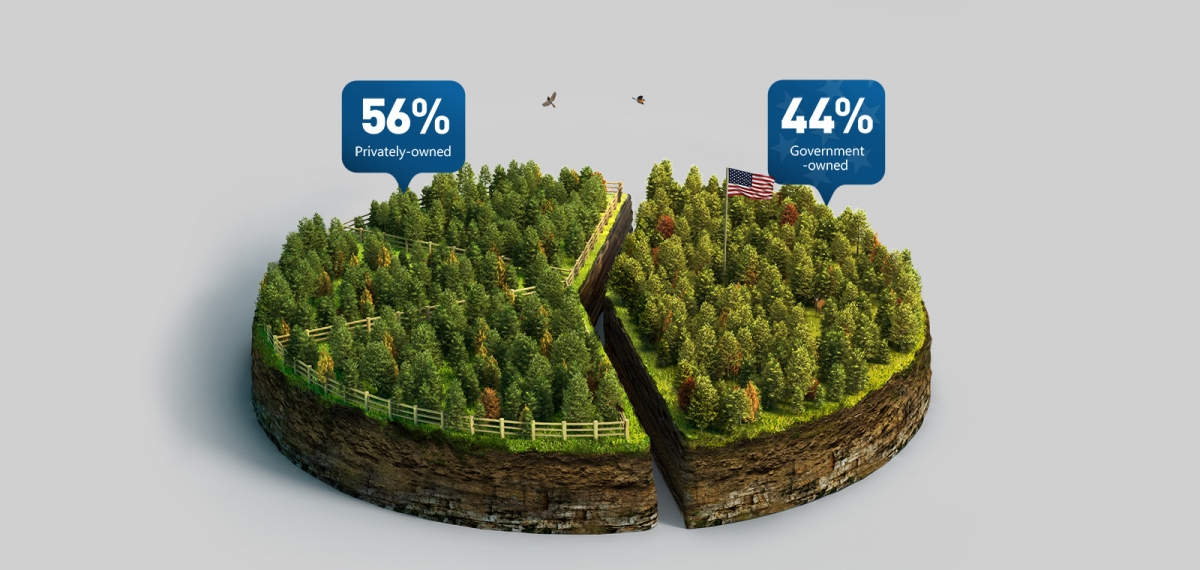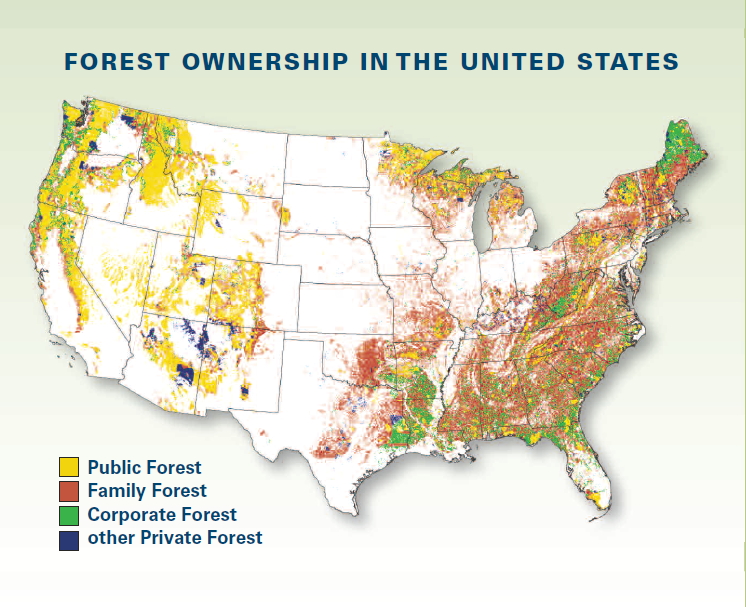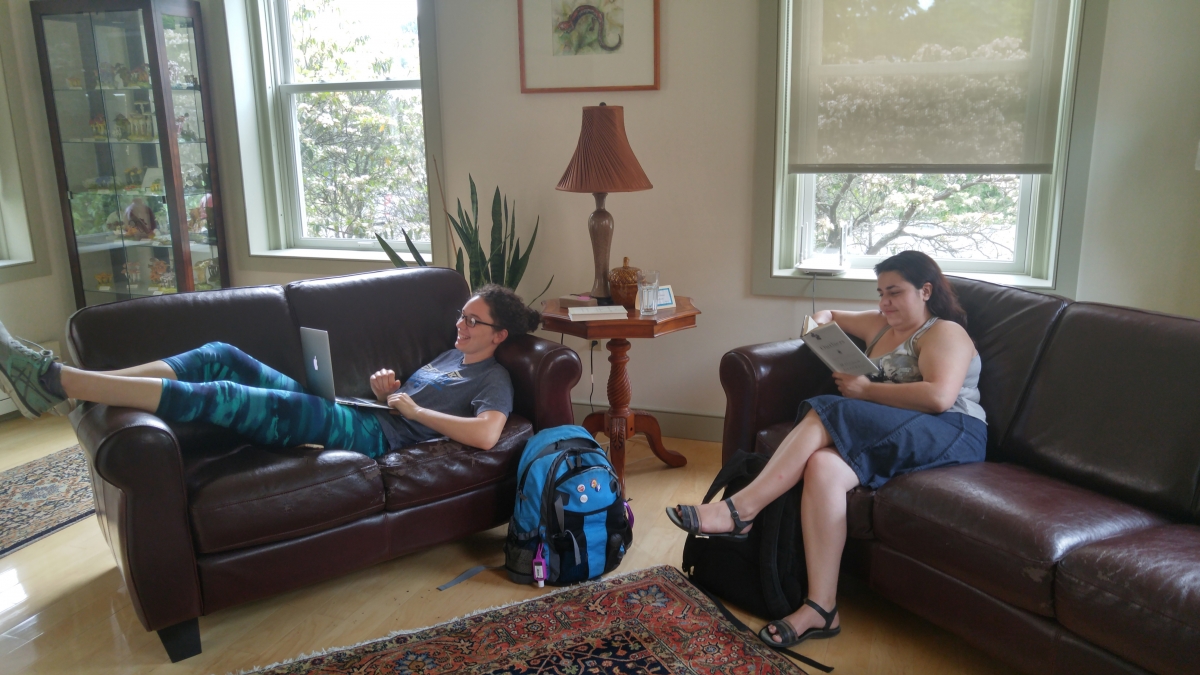You are here
I Dream of Gmail
Which tool is the most important for ecological research?
A. Plant identification sheet
B. Soil corer
C. Microscope
D. Map and Compass
E. Statistical analysis software
What if I told you that the correct answer was F: none of the above and that really, the most important thing for ecological research was a properly functioning email account? Would you believe me? While this may not be true for every project (ecological research is a wide field with a large variety of techniques used to investigate hypotheses) it is certainly true for the project that I am working on this summer.
This summer, as part of the social science lab at Harvard Forest—composed of myself, fellow REU student Karina, and our mentor David Kittredge from the University of Massachusetts-Amherst—I am working on projects (that make extensive use of email) to improve our understanding of how private woodland owners think about and engage with their land. One project, called PING 2.0, involves gathering information from participants via surveys while the other main project involves interviewing participants about their land. Both of these projects would also be impossible were it not for the relatively modern marvels of Excel, the Qualtrics survey platform, and the United States postal service.
The email account that we created for the summer is crucial for our communication with survey participants, contacting organizations who help to spread the word about the project, and connecting with IT experts at Harvard’s main campus who help us troubleshoot around technical roadblocks. We start our day checking emails, and end the day with the email account either by checking it one last time, or sending out that day’s batch of survey links to our participants. I’ve spent so much time this summer switching between screens of email inboxes and excel spreadsheets that they’ve become the backdrop to my dreams.
At this point, you may be wondering what email and surveys really have to do with private woodland owners. And why are we interested in understanding private woodland owners anyway?
Private woodland owners are incredibly important to the future of forests in New England and nationwide. Both of our projects this summer, PING 2.0 and the qualitative research through interviews, aim to improve the understanding of how landowners engage with, think about, and make decisions about their woodland. Private forest owners include industrial, corporate forest owners, as well as non-industrial, family forest owners. Family forest owners in particular play a very important role concerning the future of forests in New England because they collectively own the majority of forested land in the region. In fact, nationwide, private woodland owners collectively own more forestland than the federal government or any other type of owner.
Family forest owners have the future of the forests (and the many ecosystem benefits forests provide such as clean waters and critical wildlife habitat) in their hands. Their individual decisions shape how forestland is managed, and whether land remains as forest or become developed for other uses. Improving our understanding of how family forest owners think of their land and what they do with their land will allow for improvement in outreach and support for these landowners.
A large amount of research has previously been conducted to learn about family forest owners, including the National Woodland Owner Survey (NWOS), but some of the methods used may introduce a systematic bias to the results. One problem with the type of surveys often used to learn about family forest owners is that they ask participants to answer questions about and recall actions that took place over a year or more. The human memory is not spectacular at recalling the frequency of activities over long periods of time. Responses are strongly affected by the most recent experiences. For example, if I asked you now how often you go swimming in lakes in a year, your answer would likely be higher if I had asked you in the middle of the winter, when you are much less likely to have been swimming recently.
The new survey method that is being tested as part of our PING 2.0 project aims to combat this problem and get a more accurate representation of the activities that landowners perform on their land as well as the decisions they make about their land.
PING 2.0 is a unique survey structure that is conducted completely online (hence the critical need for a functioning email) and aims to get snapshots of what family forest owners are doing concerning their land over a month long period by “pinging” participants with frequent surveys. The name PING 2.0 comes from the act of “pinging” participants with short but frequent contact nature of the surveys, and the fact that it is the second iteration of this survey method. PING 2.0 builds off of a preliminary trial of the method run by David Kittredge and Emily Silver earlier this year. After recruiting participants for the project by mailing out postcard invitations to landowners and emailing forest owner organizations, we send out short email surveys (most only 1 question long!) every week for a month. These short surveys ask landowners to report what they have done regarding their land in the past 48 hours. Asking landowners to only consider this short period of time will hopefully mean more accurate answers, and the short surveys reduce the burden on participants. Furthermore, by repeating the same short survey question over the 4 weeks, we can see whether and how landowner activities change throughout the month.
While we won’t have the complete results of our PING project until later this summer, there are certainly lots of other things to keep us (and our email account) busy. We’ll be traveling to Vermont near the Green Mountain National Forest to conduct interviews for our second project that is investigating landowner attitudes towards climate change (Karina has written a very nice blog about that project here). Trends, interesting points, and significant statistics will emerge as we focus on digging into and visualizing the preliminary data from PING 1.0 and the data we collect with PING 2.0. Phone calls and questions will be happily answered, and of course we’ll continue checking and dreaming about email.





